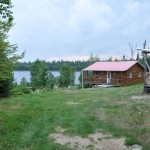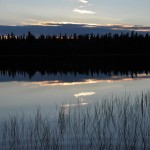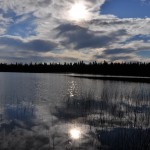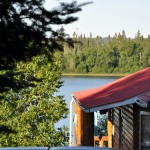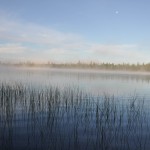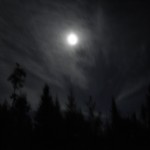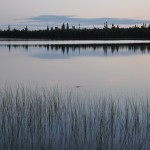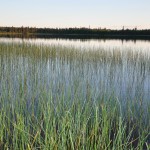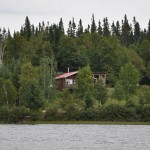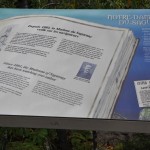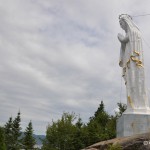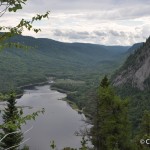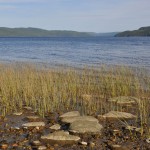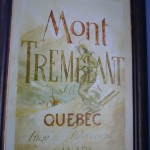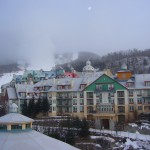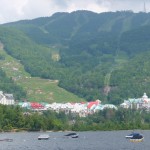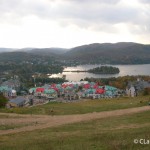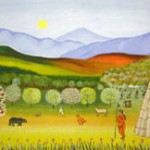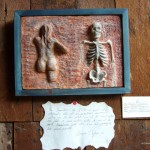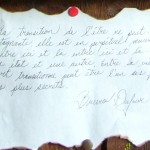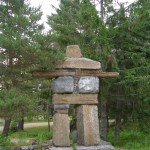First of all I will recall the legend of « Manitonga Soutana » on the Mont –Tremblant. Then I will take you on another spiritual journey that is the discovery of the Madonna of Saguenay, and finally as my journey begins I invite you to resource yourself at the Camp MUAK (loon in Innu language). We will continue on the theme of Nature even so that I have already begun my topic “Sacred Mountains” with the legend of Mont Tremblant. To illustrate those beautiful texts look at some of the pictures of today’s Mont Tremblant, a beautiful lakeside resort east of the North American continent, north of Montreal and equidistant to Ottawa, it offers: skiing, golfing, water sports, hunting and fishing, canoeing, casino … This might be surprising when viewed through the prism of spirituality according to the Amerindian faith, but it is also justified by taking into consideration men’s need for recreational space and the development is of good quality and is also well managed.
Mont Tremblant
Some 8000 years ago men came from Siberia and occupied the Laurentides, one of the oldest mountain chains of the earth. Different Amerindian nations then settled down there in perfect harmony with Nature, knowing how to take advantage of its resources. Todays “Mont Tremblant National Park was initially part of the small nation of the Algonquins. Legend has it that the Algonquins’ sorcerers gave it the name Manitonga-Sotana the mountain who dominated this landscape, mountain of the spirits or mountain of the devil” explain us Francine Loubert of the Tremblant holiday village association and Luise Arbique author of “Mont Tremblant la poursuite d’un rève”.
Writings do confirm the Amerindian’s belief and according to those the Manitou was shaking every time someone violated “the sacred laws of Nature”. The legend that follows was written by W.D. Lightall in accordance to an oral, Indian tradition transmitted to him by the Algonquin Michel Sheship. It was published in 1954 in the work: “Mont-Tremblant Story” and is an extract of the poems “Old Measures” of Lightall.
The Land of the Manitou
North in the mountains, noblest range of all,
Mont Tremblant reigns, far seen from many a
height.
And, watching from its long majestic line.
Hidden in ancient and unconquered pines.
And wrapt in misty distance or in clouds.
The Manitou-Ewitchi rules the wilds.
He watches ever, and when evil men.
Infringe the great laws of the wilderness,
The long range trembles. He who then defies
Must brave the tempest crashing 'round his path,
Rough giant hemlocks hurled towards him, hail.
Thunders and plunging bolts of fire; huge rocks
Tom by mad torrents hunt him, while around.
The indignant precipice reverberates
Stern condemnation,
Or if his pathway on the water be
A 'sudden bright and lofty cloud appears
Flashing like silver, racing down the lake.
Encyclopedia cultural heritage of French America
Complentary Document 2
And, churning white the waves, the air, the sky,
In universal shroud engulfs the boat.
But those who learn the laws and them obey,
Their breath is e'er the scent of balsam tops,
Their drink the moss-edged, clear and ice-cold springs,
Their wine the tonic of Auroral air,
Their feast of eye the never-ending parks.
Their music myriad forest birds at dawn.
The shimmering lakes their fairy travel trails.
Their wings the mountain top above the mist —
They dwell within the Land of Manitou.
The great laws of the wilderness are these —
Laid down in Council of the Manitous ;
Kill naught except for use or in defence:
Thou art the brother of all breathing things.
Love the shy plant. The venerable tree
Revere. Enjoy the gifts of Manitou
With invocation. Scar no haunt of peace.
Guard well the friendly but rebellious fire.
Therefore the kindlier Red Man later feared
The Trembling Mountain — feared with reverent head
And murmured "Manitou-Ewitchi-Saga" —
And still the mountain shakes when thoughtless souls
Defy the great laws of the wilderness
And still the children of Ewitchi live
His will, and wait the passing of brief Man.
Logan, William E., Geological Survey of Canada, part I. Can., progr. report, 1858, pp 9-65.
The spiritual life of the Amerindian women relies on the belief that close bonds exist between all living things in Nature and that all essential forms of life are linked to mother earth.
The reason why I mention this legend is to point out that modern man has not yet been able to get inspiration from an attention to the autochthone people, and hasn’t yet taken advantage of their experience. Is this really the only way to progress, without trying to find meaning and moving forward always faster without respecting Nature…? A proof is the experience of the first white settlers who came to the Laurentides, an untouched region in the 1840, and, after having drained the region of all its resources, ended up in misery. Today, what is there left from the once sacred character of the Mont Tremblant? I don’t question the development that has been done so far, that I do consider of good quality and moreover well managed, but it is important to question oneself on this race: to look for a sense of life, to go back to the fundamentals, particularly during this time of crisis which might seem like an opportunity to grasp… knowing that those issues do exists elsewhere, namely in California where the Navajos autochthone struggle to protect a sacred mountain that is meant to be the object of a tourist development plan.
Madone of Saguenay
Since 1881 the Madonna of Saguenay watches over the navigators from the top of the cliff of Cape Trinity. It all began in the fjord Saguenay, near Chicoutimi, when one day in the winter of 1878, Charles-Napoléon Robitaille, a travelling salesman of Quebec, sees the ice breaking under the weight of his horse and merchandise. While imploring the Holy Virgin he hardly managed to pull himself out of the water. Becoming seriously ill after this incident, he implored the Holy Virgin once again asking her to allow him to live at least 10 more years to take care of his family… The wooden statue, artwork of the sculptor Louis Jobin was then towed on a rowing boat over 15 km and then separated into 14 pieces at the foot of Cape Trinity to be transported during 8 days on man’s back…
Climbing up the way leading from the Trinity cove to the top of the cliff some 300 m high, was very trying for some, but a real satisfaction for all to discover the fjord and the statue of the Holy Virgin in this natural immensity. The achievement, the splendor of Nature, the statue, … all this leads us to reflection. Our spirit turns naturally to spirituality, to meditation and reverence for believers of all faith… eco tourists or pelerines can’t go wrong.
Camp Muak
Camp Muak (a hut made out of wooden logs near a lake), is situated on the foothills of the old Appalachian mountains, 200 km north of Quebec City, neighboring the Laurentides Wildlife Reserve Jacques Cartier, on the basin slope of Lake St Jean. It is a magical place, quiet, even though the forest is made use of, but new regulations require selective cutting and re-plantation. It is natural habitat to bears, lynx, wolves, moose, hares, owls, loons, trouts… The forest is so dense that it is impenetrable: spruce is dominant, mixed with birch. There are numerous wild, red berries: cranberries, raspberries, blueberries. The forest roads allow reaching the campsite by 4-wheel drive during the summer and by snowmobile during the winter.
I talk about the Muak camp in order to underline the purity of the site… the starry nights are spectacular (one can observe northern lights) … the water of the lake purifies the body and the spirit, one is elevated… one becomes humble, again, because one is in the middle of the forest, of nature, at the same time living thing and creature? This invites us to find meaning again, to take time and a spiritual dimension.
Go ahead and plunge, taste and take your time to look at the following pictures … and share your impressions with me …
- Muak camp
- Larouche lake
- Larouche lake from Muak camp
- Muak camp
- Larouche lake
- Night Muak camp
- Larouche lake
- Larouche lake
- inukshuk, camp Muak
- Muak camp from Larouche lake
- Mary Saguenay
- Mary overlooking the Saguenay
- Sagueany fjord, Trinité cove
- Saguenay fjord
- Mount Tremblant poster
- Mount tremblant development in winter
- Mount Tremblant developement from the lake
- painting native american people Mount Tremblant
- artistic work
- poetry
- Inukshuk Mount tremblant

